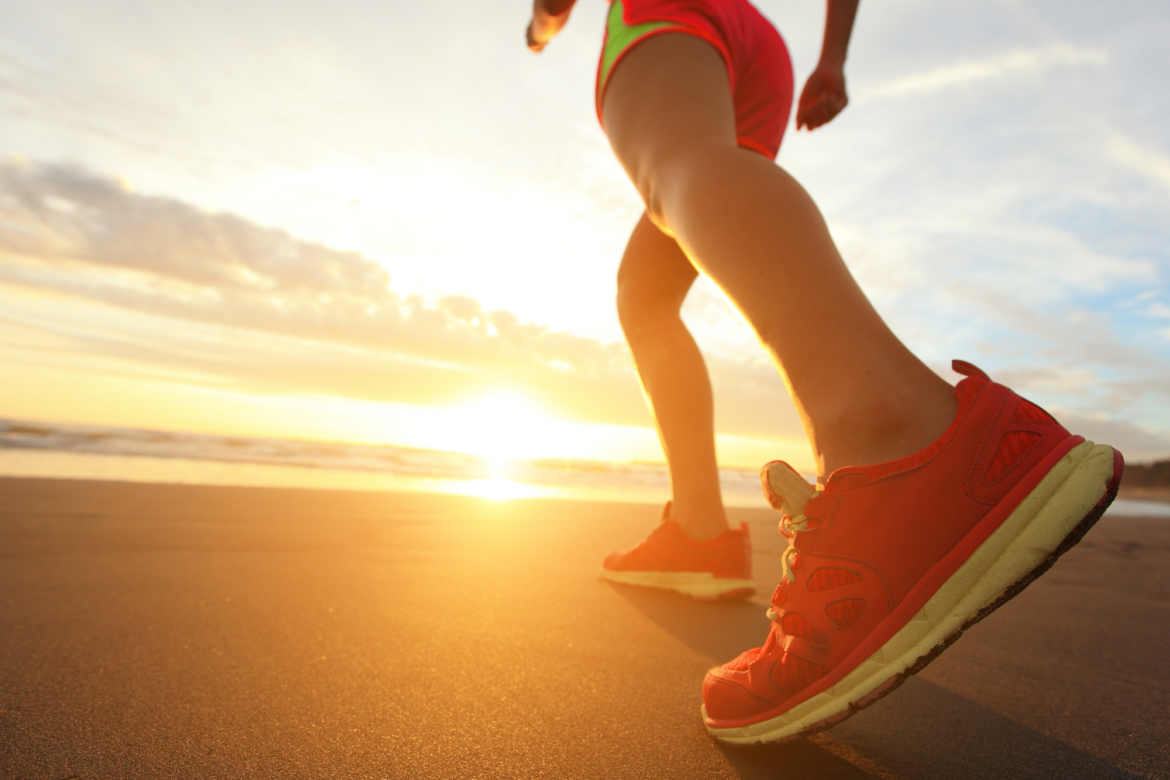Running was a hard pass
Despite being a physical therapist and knowing how the body moves efficiently and having a knowledge base of how to achieve optimal function for the body, this does not necessarily mean we all make the necessary changes all the time for our bodies. Take me for example. For my entire life, running has been both an immense physical and mental challenge. In the past, running has been such a challenge I have opted to take a different fitness route and utilize more resistance training and circuit training. Over the past four months, I have changed my workout routine 180 degrees to focus more on running. I have gone from running 0 days a week to running longer distances 4-5 days a week. This is how I began to enjoy running again.
Struggling with ankle problems
Unfortunately, I have always had very stiff and immobile ankles which made any form of running or sprinting harder to physically do. I can remember always having calf-burning type pain, as well as Achilles pain even after just 30 seconds of running. This made it very challenging to continue due to the discomfort and unpleasant experience it was when I ran. With this in mind, I made a change to my daily routine to include ankle mobility, as well as hip strengthening that takes less than 10 minutes a day to perform. Adding this has completely changed how I feel and move. I feel it is important for others to see physical therapists who struggle with aches and pains and how we work to improve our health.
What I did to change my routine
Before and after each run, I have implemented a quick stretching and mobility program for my ankles, as well as three lateral hip strengthening interventions, which have changed my body and how I feel on a day-to-day basis. Do not get me wrong, the running itself is still very challenging, but my body feels the challenge of the run itself rather than ankle and calf pain from the running motion.
The first mobility exercises I do are simple ankle circles and alphabet tracing on the ground. I do 30 circles both clockwise and counterclockwise on each foot with a round of tracing the air alphabet on each foot. The ankle alphabet is on the list because it is very simple to do and tracing the letters allows for the ankle to go through every motion our ankles can do in a quick simple way. I then do two rounds of 45 seconds of both gastrocnemius stretches on a short 2” block, as well as a standing soleus stretch which is a great way to stretch the calf and soleus after achieving some mobility.
The end of my routine includes standing ankle dorsiflexion mobilization by standing close to a wall and then trying to bring my knee cap to the wall. I do two quick rounds of 20 repetitions with both legs. Performing this exercise after my runs aid in my recovery, when my body is warm and loose, I gain improved flexibility and don’t tighten up tremendously. This after-session mobility work has improved my recovery time.
The changes I feel today
Running also utilizes our single leg stability capabilities over and over again. It is crucial to have lateral hip stability and lateral hip strength to support this single leg position when our other leg is off the ground. I’ve incorporated three hip-strengthening exercises into my running routine, which has also had a positive impact on the running movement itself. The exercises have included a true side lying leg raise with the top leg pushed into a slight extension to disengage the hip flexor, gluteus medius activation against a wall, and monster walks with a band to improve my hip strength. As I run longer distances, I feel my hips are more stable and stronger to assist with the addition of mileage each week.
Physical therapists go through our aches and pains in our own lives, but we can make changes to how we function and move to limit pain. If you have ankle tightness or pain when you are running, try adding this routine to your workout program!
If you are uncertain what is right for you when trying running or returning to run, find a Physical Therapist who can get you out on the road (or treadmill) pain-free.

